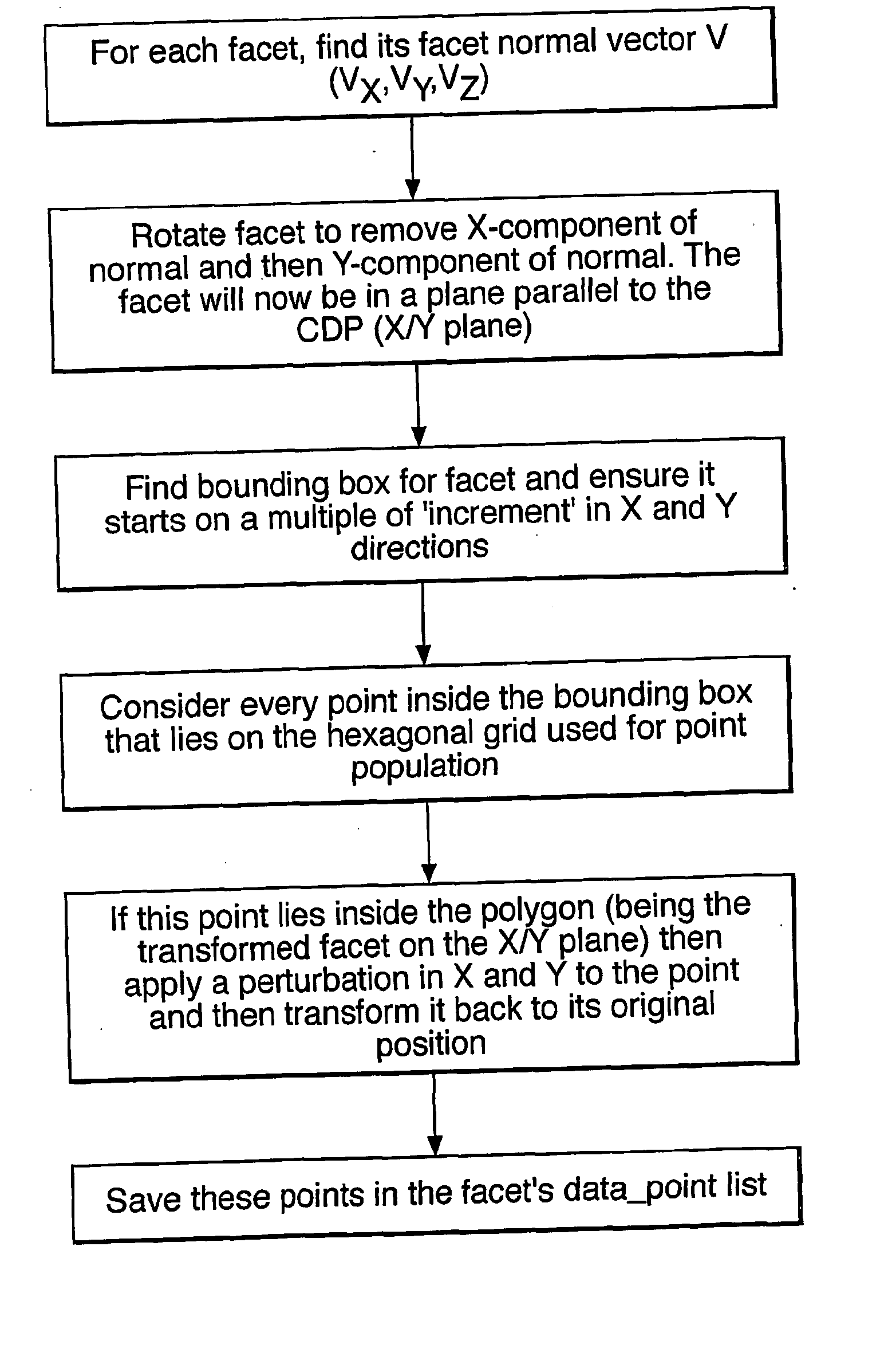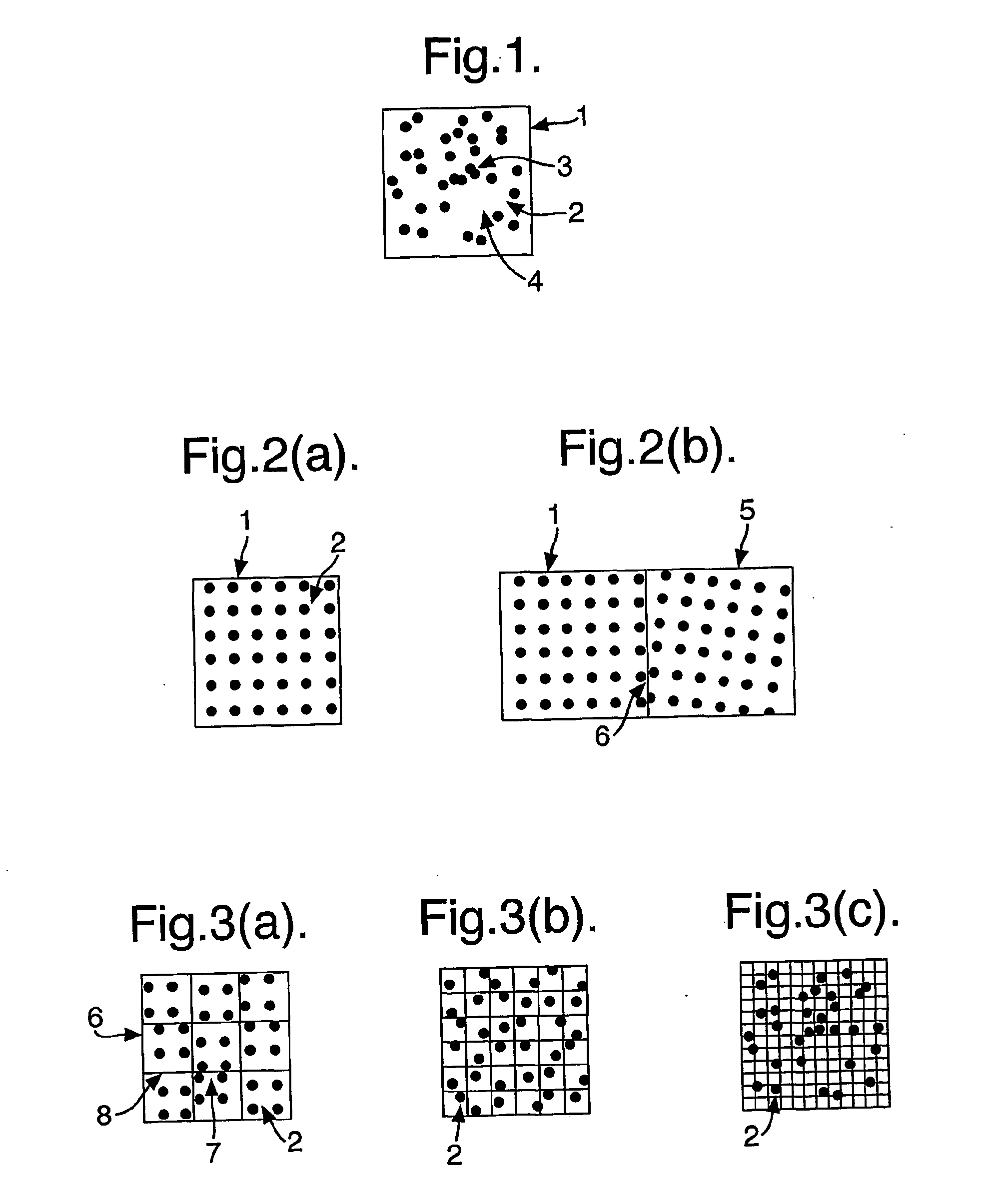Computer generated hologram display system
a technology of computer generated holograms and display systems, applied in the field of computer generated hologram display systems, can solve problems such as non-uniform density of object points across facet boundaries
- Summary
- Abstract
- Description
- Claims
- Application Information
AI Technical Summary
Benefits of technology
Problems solved by technology
Method used
Image
Examples
Embodiment Construction
[0033]FIG. 1 shows a single facet 1, as may be used to represent a part of an object, that has been populated with points 2 in a completely random fashion at a point density commensurate with a viewer distance such that in an idealised case the facet appears uniformly opaque. Some apparent clustering of the points can be seen, eg 3, as well as some denuded areas 4. These will show up on the object as an unevenness of brightness of that part of the object. The high density areas will appear to be too bright, and the denuded areas will appear as holes in the object.
[0034]FIG. 2a shows a solution that works over a single facet. The points 2 are arranged in a rectangular mesh that will appear of uniform density if viewed from a sufficient distance. This mesh does not behave so well when neighbouring facets using the same mesh are considered. FIG. 2b shows a typical example of neighbouring facets 1, 5 not lying on the same plane in 3D space that both have a rectangular mesh. In this cas...
PUM
 Login to View More
Login to View More Abstract
Description
Claims
Application Information
 Login to View More
Login to View More - R&D
- Intellectual Property
- Life Sciences
- Materials
- Tech Scout
- Unparalleled Data Quality
- Higher Quality Content
- 60% Fewer Hallucinations
Browse by: Latest US Patents, China's latest patents, Technical Efficacy Thesaurus, Application Domain, Technology Topic, Popular Technical Reports.
© 2025 PatSnap. All rights reserved.Legal|Privacy policy|Modern Slavery Act Transparency Statement|Sitemap|About US| Contact US: help@patsnap.com



